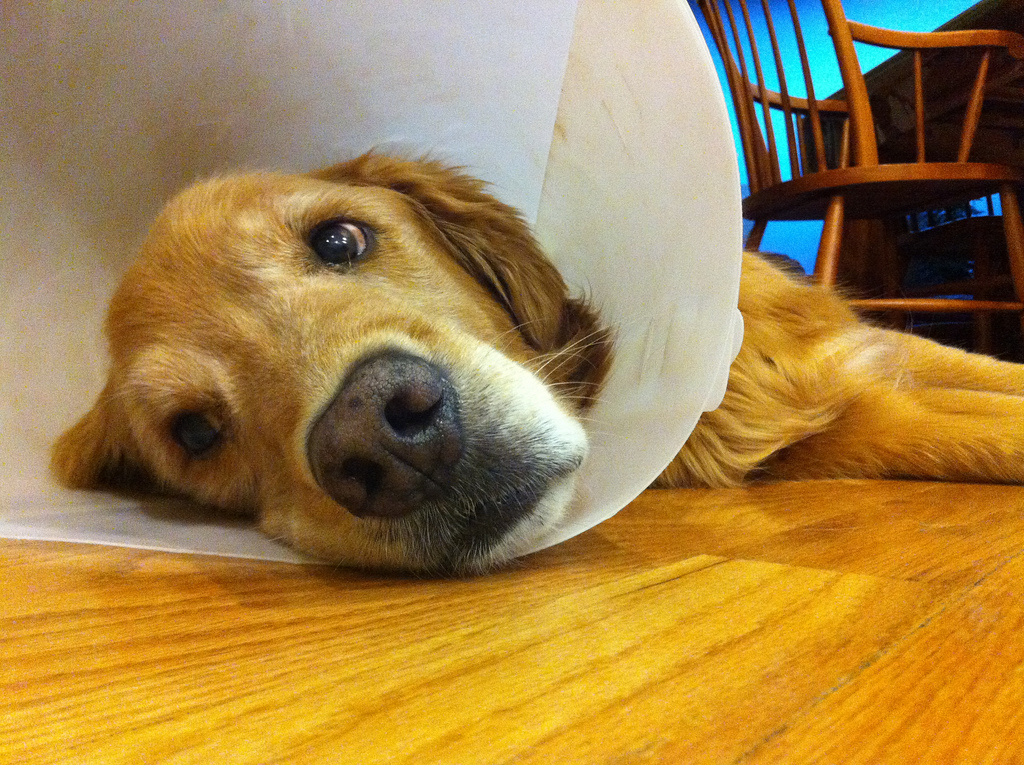
Reading time 3:30
My dog is a more cooperative patient than many patients who walk in my office door. I am blessed with a wonderful Golden Retriever named Champ. He developed an eye infection. Antibiotics and steroids have not resolved the infection. So I decided to seek out the advice of a veterinarian specializing in ophthalmology.
In their office, a technician reviewed the history. A Schirmer’s test and tonometry were performed without a topical anesthetic. Champ didn’t pull away, turn his head, squeeze his lids shut, or make any sounds of whining or growling. He just let her perform the necessary tests.
The veterinarian did an external evaluation, hand-held slit lamp and binocular indirect ophthalmoscopy. He instilled fluorescein and retracted the nictitating membrane. In all this time, Champ was the model patient.
Observing Champ’s exam, it occurred to me how nice it would be if all my human patients were like Champ. Most uncooperative patients don’t set out to be that way. But, it still creates a frustrating and challenging exam for both patient and doctor. Along with the frustration, there’s also the fear of missing something or obtaining inaccurate findings under these less than ideal situations.
There’s not one simple explanation for lack of cooperation nor one universal solution. One frequent cause is fear or anxiety. If you suspect that is the reason, then try and identify the source.
Is it fear of making the wrong choice and concern this will harm their eyes? Is it fear that they will lose their vision? Do they have high levels of anxiety associated with medical exams of any type? Do they have a history of a bad experience? Do they dislike having their lids touched? Do they object to the bright lights?
Whatever the reason may be, try and allay their fears. But, a word of caution, don’t lie or minimize possible discomfort associated with a test or procedure. I may not tell every detail, but I do tell my patients what to expect and I answer their questions honestly. After all, they will soon experience the procedure themselves. If you lie, you will lose the patient’s trust. Once you have lost trust, it may not be possible to regain it.
Whatever the reason for their fear, I find that good communication is key. Take the time needed to explain and reassure them as you perform the tests. In the long run, it will actually save you time. If you try and rush your patient through the exam, you will escalate their anxiety and further decrease their cooperation. You will have to repeat tests and still end up with a poor and unreliable result. Both doctor and patient will feel stressed and depleted by the end of the exam.
Acknowledging and discussing your patient’s fears actually calms the patient down. Being empathetic and normalizing those fears can have a major impact on the patient. I stress that it is natural to have concerns about medical tests. In fact, I confess that my own weakness is having a throat culture done. Letting your patient know that you also find some tests difficult, allows the patient to make an important connection with you. Connection facilitates the exam. Fears often embarrass patients. Putting yourself in the patient’s position decreases their embarrassment and increases their cooperation. You haven’t added to their shame, but allowed them some dignity.
It is within your power to help them relax. Share with your patient ways that they can make it easier on themselves. Deep breaths are a proven method of relaxing and centering the patient. For that matter, some just need to keep breathing. (I’ve observed that many patients hold their breaths when anxious). Simple advice can work for many patients.
When a patient can’t keep their eyes open for pupil testing or are photophobic, have them look up. It may not be ideal, but you can still see the pupillary response. The patient is more comfortable and that is preferable to forcing their eyes open and trying to make an evaluation.
Whenever possible, allowing a patient to have some control can also help. I ask my patient to tell me when they are ready for a test so they can prepare themselves instead of surprising them. They might want to hold their own lids. If so, let them try. Instruct them on how to hold them without getting their fingers in your way. Show them how to have good control without exerting too much pressure on their eyes. I am often surprised at how allowing them lid control can work and if it doesn’t work, at least the patient knows you tried it their way. These simple steps can make a difference in the exam and its results.
Fearful and anxious patients are appreciative when you make the effort to treat them with kindness and compassion. It would be wonderful if all patients could be as cooperative and reliable as Champ, but the fact is many can’t. Remember that your attitude and approach to them can sometimes make a difference. Why not try to make the exam more pleasant? You have nothing to lose and everything to gain.
What helps you when faced with an anxious or uncooperative patient? Share your comments below and let’s begin a discussion.
